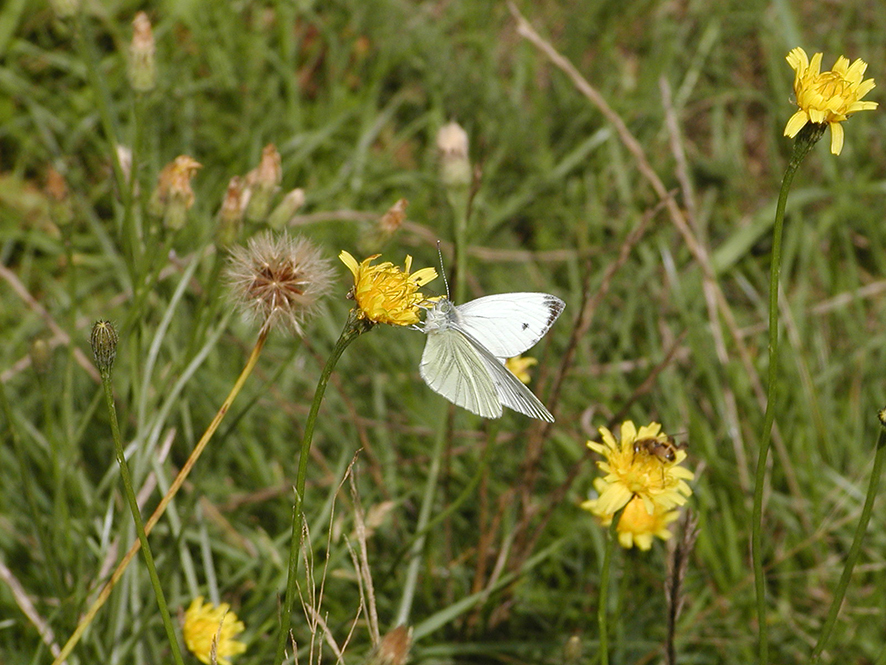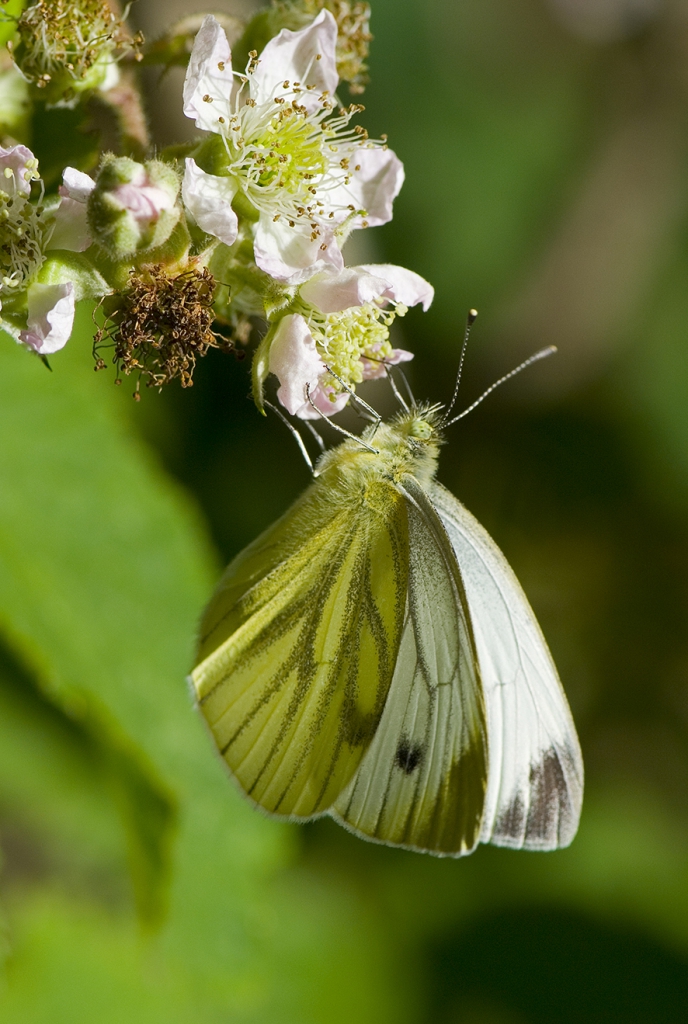The green-veined white butterfly
The green-veined white does not eat cabbage
The green-veined white is a white butterfly, which is closely related to the large and small green-veined white butterfly. Although they look very similar, the green-veined white is characterised by the fact that its larvae do not live on cultivated cabbages. Cabbage belongs to the cruciferous family, and it is also the wild plants from this family, especially the garlic scented garlic mustard that is fodder for the green-veined white butterfly.
Anti-aphrodisiac against adultery
Once a male has mated with a female, it wants to make sure that the female does not flirt with other males until she has laid the eggs that he has fertilised. Therefore, the male delivers a kind of anti-aphrodisiac to the female at the time of mating, which acts as a sexual deterrent to other males. The female can now lay her eggs in peace. When the effects of the substance subside and she again is attractive to other males, she can mate again. The female can mate with different males and will lay eggs up to four times in one summer. The last generation of butterflies spend the winter as pupae, and they come out of the cocoon in April.

Facts: The green-veined white butterfly has a wingspan of 37-53 mm. The base colour of the wings is white, but the species is distinguished from other garden whites by the fact that its rear wings have a yellow underside with grey-green veins - hence the name. The female has 2 black spots on the upper surface of each forewing. In the first generation, the male has no wing spots, and the in second generation it has one spot on each forewing. The egg is yellow, long ribbed and barrel-shaped, the larva is green, and is missing the yellow side stripe that the small cabbage white butterfly larva has. The green-veined white is common and widespread throughout Denmark.


